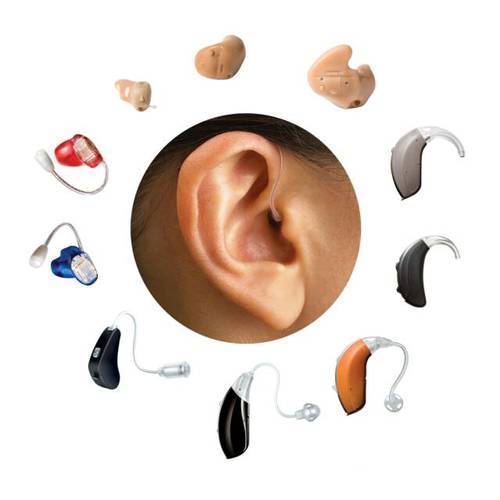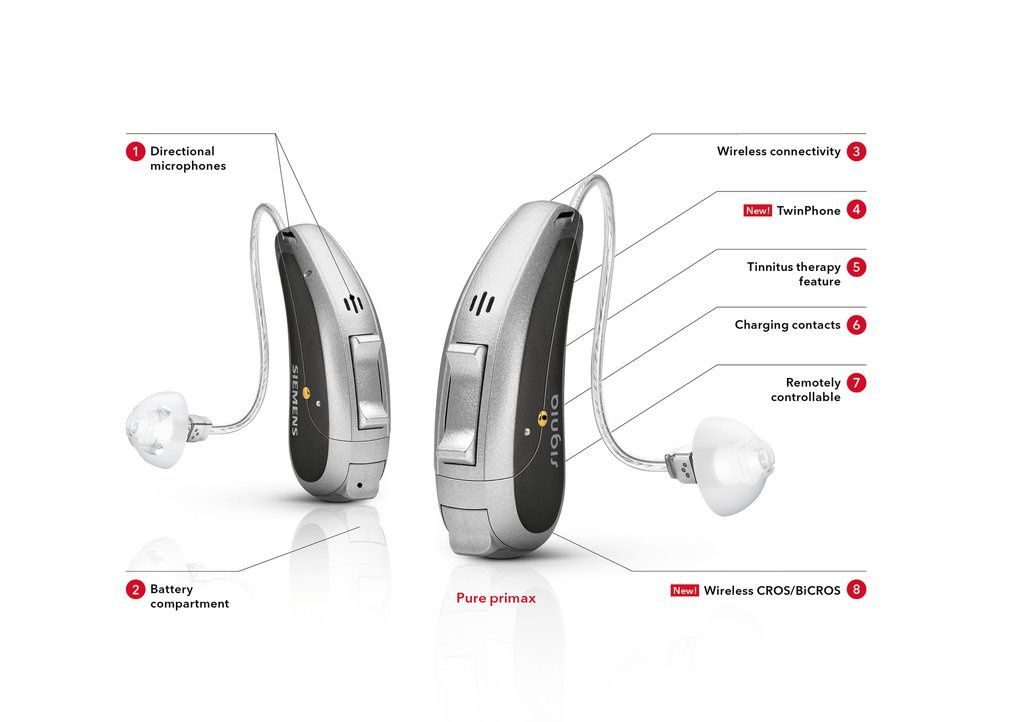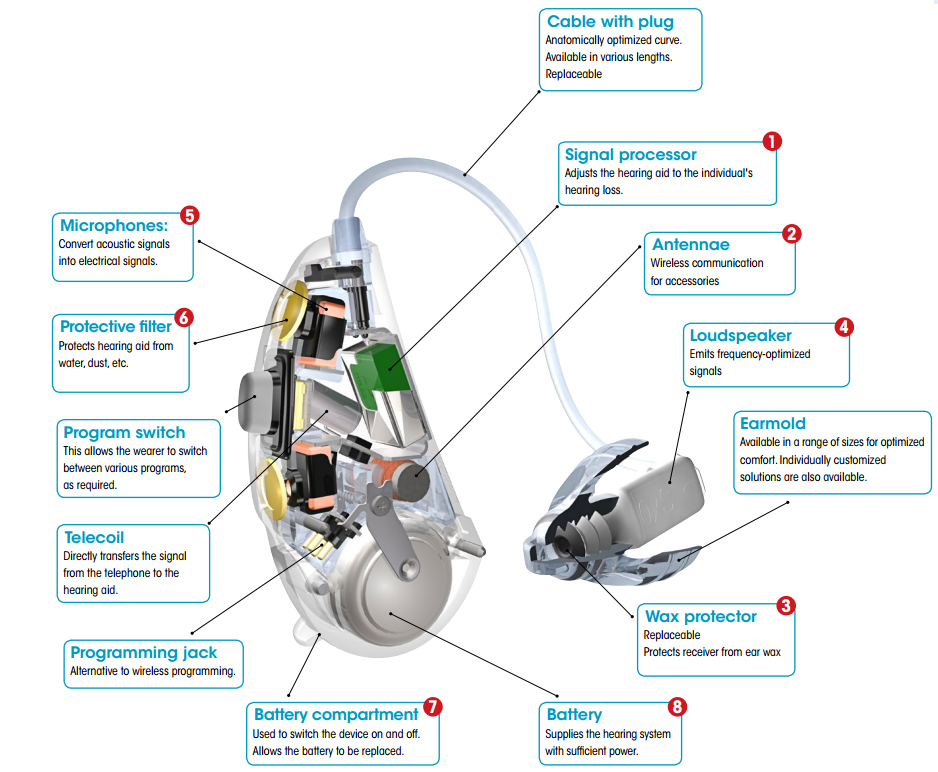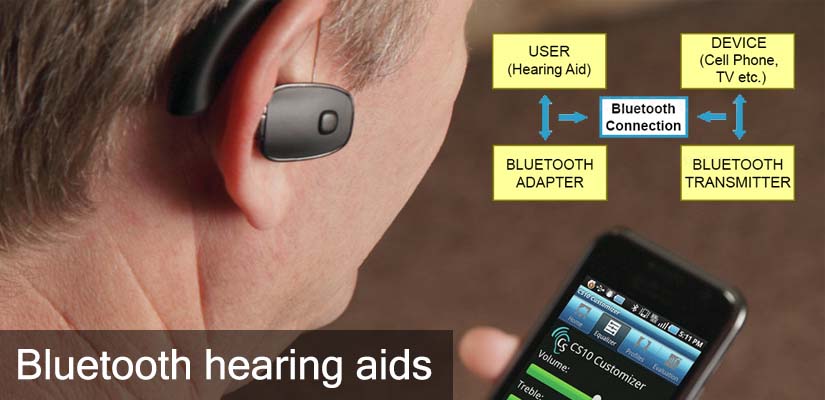Hearing aid technology has been progressed since the past years. Various manufacturers have provided variety and modern technologies of hearing aids. Today the innovation focuses on the type of hearing loss you are going through. Though you can observe the variations and development in hearing machine technologies, it consists of the basic components such as:
You can purchase the latest hearing aids at a fair price through HearingSol, If you need any assistance or you have a query regarding Hearing aid or Hearing Loss, feel free to call us at +91-9327901950. We are always here to help you.
- Microphone: Receives auditory signals and converts them to electric signals.
- Processor: Makes the electrical signal louder.
- Receiver: Converts the amplified signal back to the acoustic signal and sends it to the ear canal.
- Battery: Powers the device.
- Electronic Circuitry: Electric circuit inside hearing aid for its functioning.
In this article, we will make you aware of the different types and technologies available in the hearing machine industry. Then after we will help you learn the major differences between all innovation level so that you can choose the right one for you.
Digital Hearing Aid Technology
You may discover the bulk of hearing aid technology in the part called processor. Today they are more programmable than ever before. It allows the hearing care professional to precisely fine-tune the amplification characteristics and customize other special features based on your needs. The practitioner programs the hearing aids by connecting them to a computer and detecting them with special software provided by the manufacturer.
Hearing Aid Types

Digital hearing machines are available in different styles and forms. Each style highly depends on your hearing needs and your wearing styles.
- Behind the ear (BTE): It will sit comfortably behind your ear transmitting sound through a tube to either a dome that rests at your ear canal or an earmold that sits inside your ear.
- In the ear (ITE): This type fits within the outer portion of the ear.
- The receiver in the Ear (RITE or RIC): It is also called receiver in the canal hearing aid. It consists of a case that sits behind your ear. But unlike BTE devices, receiver piece goes inside the ear which makes it smaller than BTEs.
- In the canal (ITC): This type fits in the ear canal and a smaller portion of it shows in the outer ear.
- Invisible in the Canal (IIC): These are the tiniest form that fit very deeply in the ear canal and is invisible.
- Completely in the canal (CIC): As the name suggests, these are completely in the canal. Only the small portion of it(tiny removal handle) shows outside the ear canal.
- Contralateral Routing Of Signals (CROS): CROS is useful when you have a hearing loss in one ear. It includes a microphone that is worn on the poorer hearing ear.
- Bone conduction: In this machine, the user wears a vibrating device on the bone behind the ear, and the sound is transferred to the ear through this device.
Today basic ear machines are far more beneficial and popular than previous ones. You can get the best hearing aid at a fair price through HearingSol.
Technological Features of Digital Hearing Aids

- Digital signal processing – It converts the incoming sound into digital values for processing, then converts them back into sound pressure waves that stimulate your auditory system.
- Automatic Gain Control – It helps in making softer speech sounds audible while controlling how much unwanted loud sounds are amplified.
- Noise reduction – It analyzes the incoming sound and separates speech from steady background noises. It will reduce the impulse sounds, soft sounds, and sounds of the shooting winds.
- The adaptive feedback cancellation system – It reduces feedback and background noise.
- Omni microphone – It emphasizes sounds in all directions.
- Directional microphones – Emphasizes sound coming from the front; de-emphasize sounds coming from the sides and behind.
- Automatic and adaptive directional microphones – These features allow the hearing aids to switch from an Omni microphone setting to a directional microphone setting automatically and dynamically.
- Listening Memory Program – They provide a setting designed for a particular listening situation.
- Wireless connectivity – It includes features like binaural hearing, communication between hearing devices and external audio devices, remote and volume control in wireless features.
Latest Hearing Aid Technology

As the Hearing Aid Technology level increases, it raises the functioning level of the components of hearing aids. As technological development demands the variations in the system as well as functions of those devices
The innovation of hearing machines can be categorized in basic or advanced. Let’s discuss both in the detail.
Basic Hearing Aid Technology
In basic Hearing Aid Technology, manual adjustment is needed like pushing a button on the aids to reduce noise coming from behind, volume control can be adjusted. This type has limited adjustments. They are less automated than advanced technology.
The following features are usually included in basic innovation –
Channels
The Channel separates the sound signal into distinct sections for processing. It allows customization of hearing aid prescription all pitches. The number of channels implies a greater ability to customize the frequency response. The more channels in a hearing machine, the greater the flexibility in programming.
Digital Noise Reduction
As the name suggests, it reduces the noise in the signal if any. It analyses the signal and determines if the signal contains unwanted noise. And finally, it reduces it and makes it less annoying to the listener. Hearing Aid Technology is effective and preferred by most of the hearing aid wearers.
Directional Microphone Systems
It is based on a direction and gives preference to the sounds which are coming from the front of the wearer and reduces the sound from all other directions. This hearing aid technology improves speech understanding in background noise. The hearing devices with directional microphone systems will provide you with the best satisfaction than the one without directional microphone systems.
Impulse Noise Reduction
It helps in improving listening comfort like digital noise reduction. It smoothes the quick impulsive noises like typing on the keyboard, dishes rattling, car keys rattling, etc.
Telecoil
Telecoil also called an induction coil. It’s nothing more than a tiny coil of wire around a core that will induce an electric current in the coil in the presence of a changing magnetic field. It has wireless features that pick up the electromagnetic signal from the older telephone or looped room, whose speaker was driven by powerful magnets. As a result, a user is able to hear the telephone better using a hearing aid. Telecoils are not available in a few smaller models due to space limitations.
Feedback Management System
It reduces the occurrence of a whistling sound in your hearing aid. To improve the feedback mechanism, Basic feedback management systems may reduce overall amplification whereas Advanced feedback management systems do not affect overall amplification. It improves the signal to noise ratio by bypassing the microphone and directly entering the processor. It is commonly available in public places, theatres, and public places.
FM Compatibility
Using FM Compatibility, you can connect your hearing machines wirelessly with FM systems. Sometimes, this connection is made via a special attachment called boot. It improves the signal to noise ratio. It is commonly used with children in educational settings.
Advanced Hearing Aid Technology
In this level, the features of hearing devices became more advanced and automatic than in basic. Advanced Hearing Aid Technology provides more benefits to the user. For example, instead of using two channels to separate sound for processing, a hearing aid with advanced technology may have eight or more channels. This splits the signal into even smaller frequency bands and therefore offers a higher resolution of signal processing.
Features included in Advanced technologies are as follows :
Bluetooth technology

Using Bluetooth hearing aids, you can wirelessly connect to mobile phones, mp3, and other Bluetooth devices. It eliminates feedback or interference and improves the signal to noise ratios like telecoil and FM Compatibility as the signal bypasses the microphone and directly enters the hearing machine’s processor. Hence making it comfortable for the wearer to hear sounds.
Data Logging
It stores data about listening environments and user preferences like volume control. Hearing healthcare professional analyze this data to improve the fitting. Your audiologist may use this valuable information to further customize your hearing aid fitting.
Wind noise reduction
It is helpful for people who spend their time outside. Their work is to reduce the noise of wind passing through the microphone. It is an advanced technology that detects the impact of the wind blowing across the hearing machine microphones and avoids or reduces the amplification of it.
Learning features
As we said that advanced technology has automated features so here wearer can set log settings for the certain environment and then these changes begin automatically according to the sound environment. These technologies provide a preference for learning.
Binaural processing
This can be used for the synchronous operation of hearing aid or to pass auditory signals from one aid to the other. Basically, two devices communicate with each other. In binaural processing, a pair of devices communicate wirelessly with each other. This innovation mimics the brain’s ability to process information coming from both ears and helps reduce manual adjustments. It enhances your experience of binaural hearing.
Difference B/W Analog and Digital Hearing Aids
The electronic circuitry of various hearing machines like analog and digital differs even their type and style is the same.
Comparative chart showing components of Digital and Analog devices :
| Components | Analog | Digital |
| Microphone | YES | YES |
| pre-amplifier | YES | YES |
| Means processor | YES | NO |
| Analog to digital converter | NO | YES |
| Digital signal processor | NO | YES |
| Digital to Analog converter | NO | YES |
| Amplifier | YES | YES |
| Receiver | YES | YES |
Under processing technology comes audio processing. Audio processing is of two types- analog and digital. Hearing machines can be analog or digital. Let’s see what are their advantages.
Analog Hearing Aids
An analog amplifies all sounds whether it is sound or noise. Some are programmable. Microchip stores these program settings information. You can set it according to various listening environments. This makes it user-friendly and comfortable.
Advantages
- Sometimes they are more powerful than a digital hearing device.
- Generally, cost less than a digital.
- Sometimes people who want to use their hearing machine for a long time prefer analog.
Digital Hearing Aids
The latest hearing technology involves Digital Hearing Aids. They have all the features that an analog has. The difference is that they convert sound waves to digital signals and produces the exact duplicate of the sound rather than just amplifying it.
Advantages
- Most adjustable and flexible.
- Highly programmable for different listening environments.
- ‘Noise reduction algorithm’ helps for reducing background noise.
Choosing the Right Level of Hearing Aid Technology for You
There are mainly six differences that you need to look out before choosing the right level of technology for you.
Customizability
Customizability refers to the range of amplification (or frequency) that a hearing device can perform. If it has a low number of channels, you would get less precision in hearing. Unlikely in advanced technology, there can be 20+ channels and a high number of channels helps in a fine precision of hearing and this also allows your device to be well programmed up to your prescription.
The ability of a device to perform well in the noisy background
Most of the hearing aids have the ability of binaural synchronization i.e. they communicate back & forth between themselves. This helps in hearing background noise and improving hearing conditions as it has four microphones instead of two microphones on both ears which are communicating with each other and hence helps in finding the better listening landscape in a noisy background. Premium level of technology can do this more precisely than the basic one which may not perform well in a noisy background.
Ease of use
The basic level of technology may have less number of programs and may not help you with better listening in a noisy background. But advanced technology has a large number of programs which can help you to listen better. Moreover, you have to adjust settings for hearing in different environments but advanced innovation does it automatically for you. It automatically turns the settings according to the environment you are in.
Comfort in sound
When you find yourself in a kind of environment where a harsh sound is present, a hearing machine with advancement helps you to get rid of those sounds by blocking them as they have advanced digital features. In contrast, a basic technology may not have such features and as a result, you’ll find it difficult to hear in a harsh sound background.
Connectivity
If you want connectivity with devices like telephone and Bluetooth devices and also wants a potential rechargeability, you must go with the upper level of technology. Most of the brands do not allow connectivity at a basic level.
Cost
If you want an advanced level of technology rather than a basic level, you have to spend more money. You have to spend almost Rs 69,084 more for a premium level of technology than for basic level. But it’s worth it if you want advanced features in your hearing aid and wants a better hearing. But if you are someone who stays at home all the time and watches TV and has less conversation with people then you will be ok with the basic level of technology.
We hope that, once you finish reading this article, you will have enough knowledge of various technology available in the industry and you will be able to decide which style & type is right for you. If you need any advice or help related to any hearing problem, book an appointment or dial our toll-free number +91-9327901950.
Read more useful articles:

